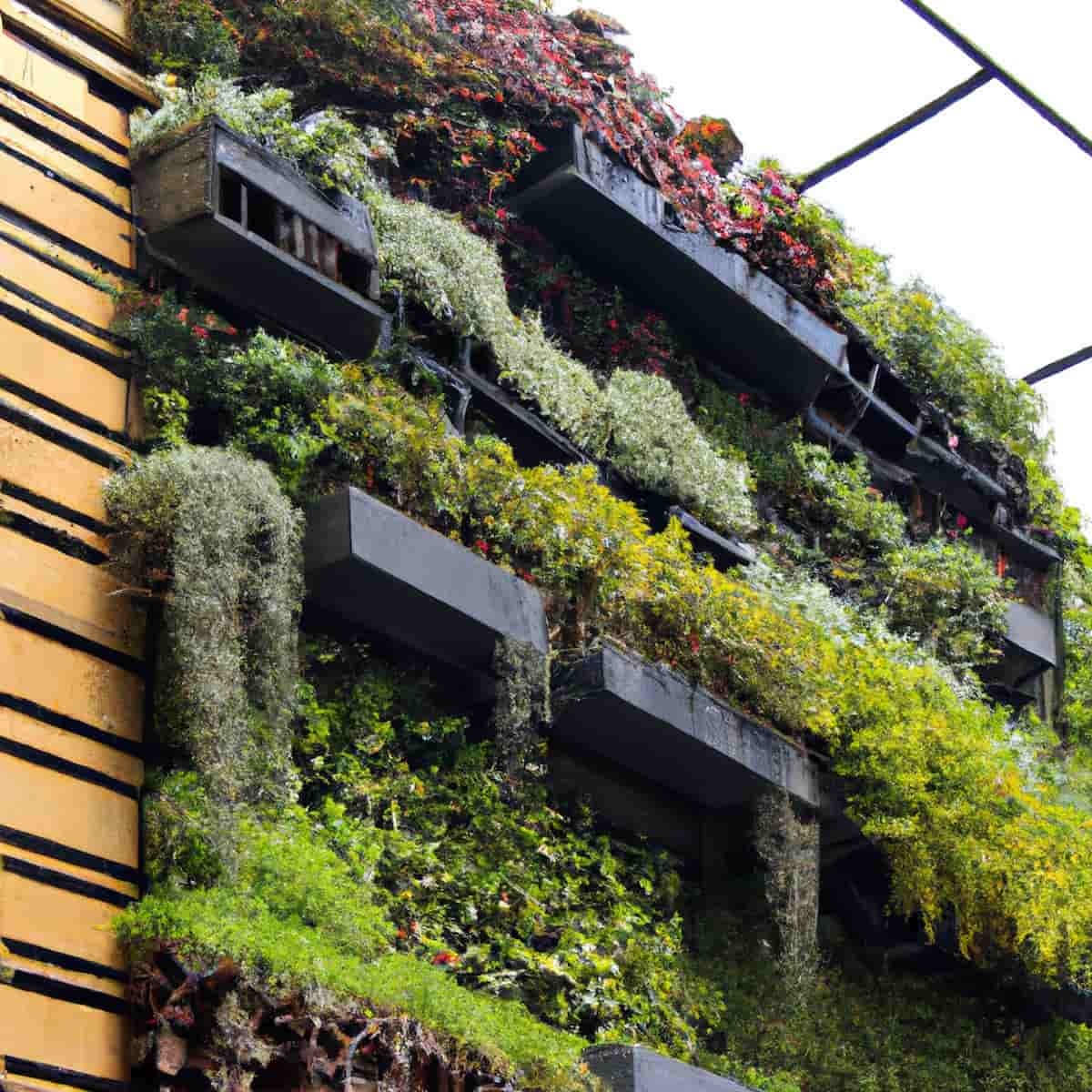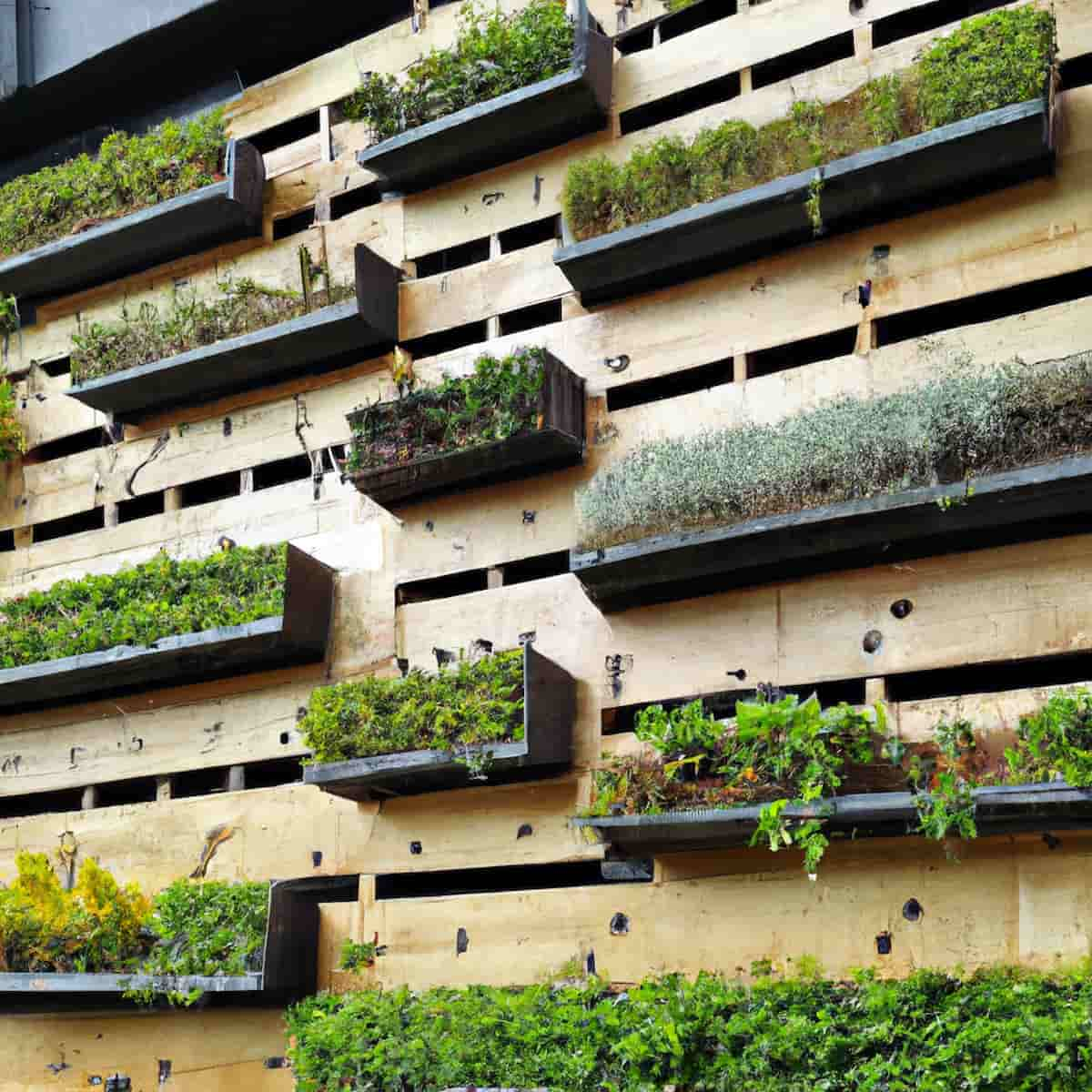If you have a terrace, you might wonder how to make the most of this space. A vertical terrace garden is a great way to bring life and greenery into your outdoor area and can also help improve the air quality around your home. This guide will show you how to create your vertical terrace garden step-by-step. You don’t need to be an expert gardener to do this – we’ll cover everything you need to know, from planning and building your garden to planting and maintaining it.

A Guide to Creating a Stunning Terrace Vertical Garden
What is Terrace Vertical Garden?
A vertical terrace garden is a type of vertical garden that is specifically designed to be grown on a terrace or balcony. It is a great option for those who want to make the most of limited outdoor space. Plants are grown vertically in a vertical terrace garden using a support structure such as a trellis, planter, or hanging basket.
This allows the plants to occupy less horizontal space while providing maximum yield. One of the benefits of a vertical terrace garden is that it doesn’t require soil to grow. Instead, you can use other growing mediums such as coco coir, perlite, or vermiculite. This makes it easier to maintain your garden and prevents soil-borne diseases.
Why to Prefer Vertical Gardening?
- Maximizing space: Vertical gardening allows you to grow more plants in a small space, making it ideal for those with limited outdoor space, such as balconies or small yards.
- Easy maintenance: Vertical gardens are often easier to maintain than traditional gardens, requiring less bending and squatting to tend to the plants. You don’t have to worry about weeds taking over your garden.
- Water conservation: In a vertical garden, water can be easily recycled and reused, which can help you save water and reduce your environmental impact.
- Pest control: By growing your plants vertically, you can reduce the risk of pests and diseases that soil-borne organisms can spread.
- Aesthetically pleasing: A vertical garden can add beauty and interest to your outdoor space, providing a unique and eye-catching focal point.
Best Vegetables for Terrace Vertical Gardening
Terrace Vertical gardening is a technique of growing plants in a vertical orientation, typically in urban or small spaces, such as balconies, patios, or rooftops. The best vegetables for vertical gardening are those that can thrive in small spaces, have shallow roots, and don’t require too much sunlight. Some of the best vegetables for vertical gardening include lettuce, spinach, kale, radishes, cherry tomatoes, cucumbers, peppers, and herbs.
- Sugar snap peas are ideal for early spring planting in urban gardens due to their small size and nitrogen-fixing properties.
- Spinach can be grown vertically in an upright planter or trellis and is rich in magnesium.
- Trellising cucumbers protect them from pests and works for both bush and vining types.
- Indeterminate tomatoes are best for vertical gardening and can be supported by wood, bamboo, or metal sticks.
- Pumpkins and winter squash can be grown vertically to save space and improve air circulation.
- Pole beans require support and can be grown with any support system, including trellises.
In case you missed it: Discover 20 Budget Friendly DIY Garden Ideas: Cheap Ways to Create Your Own Garden

Vertical Gardening Ideas for Small Spaces
Vertical gardening is a technique that can be used to grow plants in limited spaces, on balconies, patios, or walls. There are many ways to set up a vertical garden, from using self-reliance garden towers, hanging pots, and gutters to trellises, tower gardens, tray herb gardens, pallet tray systems, hardware cloth frames, bottle gardens, florafelt systems, succulent gardens, freestanding gardens, and pyramid gardens.
The Garden Tower is a soil-based gardening system that can grow up to 50 plants in 4 square feet and easily rotate for plant access and sunlight, compost kitchen scraps into organic fertilizer, recycle nutrients, save water, and vermicompost. Hanging pots are the simplest way to create a vertical garden, while gutters can be repurposed to create a window box type of garden.
Trellises are recommended for gardeners who grow vining vegetables as they can provide a larger harvest and a cleaner garden, making it easier to find all those hidden tomatoes. Tower gardens, tray herb gardens, pallet tray systems, hardware cloth frames, bottle gardens, flora felt systems, succulent gardens, freestanding gardens, and pyramid gardens are other options that can be used to set up a vertical garden.
Benefits of Having a Terrace Vertical Garden
Terrace vertical gardens are a great way to optimize unused space while increasing food production, improving air quality, reducing the urban heat island effect, mitigating pollutants, and enhancing biodiversity. They also provide social and societal benefits by reducing stress levels and improving overall well-being. In addition, vertical gardens can improve building energy efficiency by providing insulation and reducing noise pollution in urban areas.
Planning Your Terrace Vertical Garden
- Choose a location with ample sunlight and proper drainage.
- Determine the size of your garden based on available space and the plants you want to grow.
- Decide on a watering system based on garden size and plant type.
- Select plants well-suited for vertical gardening and will thrive in the available light and soil conditions.
- Choose a high-quality soil mix and consider using organic fertilizers.
- Install a sturdy support structure to prevent garden collapse.
- Plan for regular maintenance tasks such as pruning, watering, and fertilizing.
Building Your Terrace Vertical Garden
- Prepare your rooftop before planting to prevent potential damage.
- Rooftop preparation can be costly and may require expert help.
- Plant roots can harm the building’s structure.
- Proper drainage is essential for terrace gardening.
- Without a drainage system, excess water can collect and damage the roof.
- Most rooftops already have water drainage systems installed during construction.
Planting Your Terrace Vertical Garden
- Have the right tools and equipment, such as a trowel, watering can or hosepipe, shovel, gardening rake, and pruning scissors.
- Prepare healthy soil by mixing soil with organic compost and adding a balanced texture for plant growth. Avoid using chemical fertilizers.
- Waterproof your rooftop before building a garden to prevent water damage to the building.
- Install wind barriers if the plants are exposed to strong winds.
- Grow plants that thrive in the amount of sunlight your balcony receives.
- Choose suitable vegetables for your terrace garden, and consider factors like sunlight, watering, soil PH level, and temperature requirements.
- Place your plants in spots that receive ample sunlight and are safe from predators.
- Use vegetable seed kits for your terrace garden.
Maintaining Your Terrace Vertical Garden
- Proper materials and design can make maintaining a vertical terrace garden easier.
- Choose lightweight materials for the garden frame and planters to avoid excess weight on the terrace.
- Use high-quality potting soil to ensure proper plant drainage and nutrition.
- Select plants that are appropriate for the environment and sunlight conditions of the terrace.
- Install a drip irrigation system to provide consistent water and avoid overwatering.
- Regularly prune and trim plants to maintain their shape and prevent overgrowth.
- Clean the garden regularly to remove debris and prevent pests and diseases.
- Fertilize the plants as needed to provide additional nutrients.
In case you missed it: Top DIY Cottage Style Garden Ideas

Conclusion
Creating a stunning vertical terrace garden requires careful planning, choosing the right plants, providing proper maintenance, and utilizing available space effectively.
- Ultimate Guide to Ossabaw Island Hog: Breeding, Raising, Diet, and Care
- Ultimate Guide to Juliana Pig: Raising Facts, Size, Diet, Care, and Lifespan
- Raising Lleyn Sheep: Disadvantages, Price, Uses, Characteristics, and Care
- Ultimate Guide to Meishan Pig: Breed Facts, Breeding, Raising, and Care
- Ultimate Guide to Teacup Pigs: Raising, Diet, Lifespan, Cost, and Care
- Guide to Raising Poll Dorset Sheep: Facts, Profile, Characteristics, Uses, and Care
- Ultimate Guide to Bighorn Sheep: Characteristics, Diet, Lifespan, Breeding, and Lifecycle
- Ultimate Guide to Raising Katahdin Sheep: Farming Facts, Breed Profile, Uses, and Care
- Ultimate Guide to Raising Oreo Cows: Belted Galloways Farming Facts, Profile, Uses, and Care